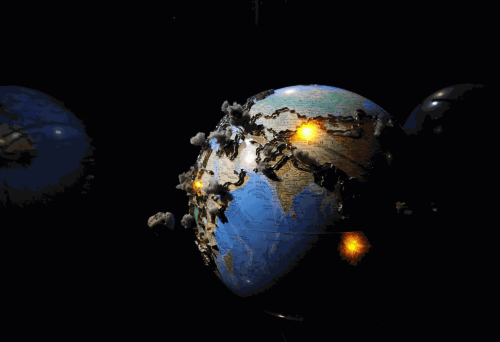What more appropriate to talk about the microscopic than to use an interplanetary scale.
What more accurate to feel the damage that surrounds us and makes us suffer than to move away at a distance of terameters.
In Deep Impact, the viewer is placed in a different and distant perspective, perhaps from an orbiting satellite, perhaps from another planet. He sees his face reflected in a showcase that houses the work, which is displayed as a luxury object, or as a scientific specimen in a cabinet of a natural history museum. It is a small intervened globe and a tiny volcanic stone. Enough to show the grandeur of our devastation.
Planet Earth ravaged by dozens of clouds caused by gigantic explosions that flicker on and off. Countries in conflict - the greater the conflict, the bigger the explosion - whose limits are outlined by enormous borders, visible from outer space. An astronaut's gaze, frightened by the possibility of never returning home, because home is threatened. As if the internal wars were not enough, a meteorite, a death sentence, advances towards our planet.
An Armageddon without Hollywood script, without Bruce Willis, without Tom Cruise, without an Arnold Schwarzenegger to save us from the ultimate annihilation. A profound impact with a double meaning. The one that the Earth will inexorably suffer, and the one felt by the audience when they come face to face with the fulfillment of the worst omens. Blockbuster “save the world” movies work at the box office for one reason only: they have a happy ending. Deep impact too?

